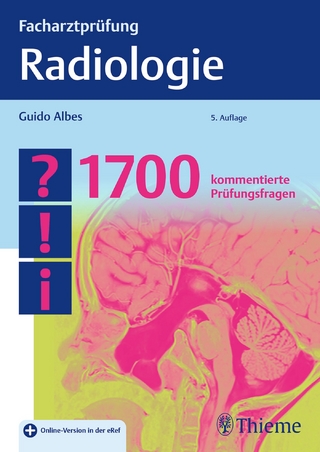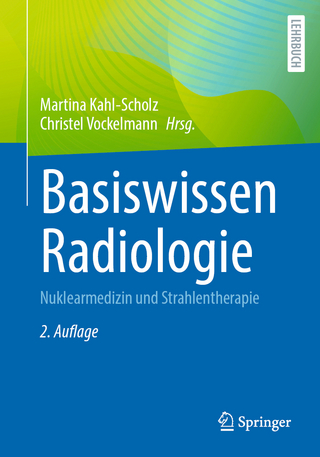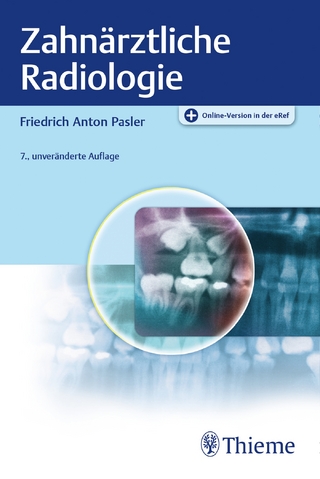
X-ray Differential Diagnosis in Small Bowel Disease
Kluwer Academic Publishers (Verlag)
978-0-89838-351-5 (ISBN)
- Titel ist leider vergriffen;
keine Neuauflage - Artikel merken
I. Introduction.- II. Examination technique.- A. General.- B. Preparation of patiens.- C. Duodenal intubation.- D. Contrast fluid and films.- 1. Properties.- 2. Rate of flow and dose.- 3. Number of films.- E. Administration of water after the barium suspension.- F. Indications for aircontrast.- G. Special examination techniques.- 1. In case of ileus and subileus.- 2. In case of babies and small infants.- 2.1. General.- 2.2. Preparation.- 2.3. Duodenal intubation.- 2.4. The contrast fluid.- 2.5. The examination.- 2.6. Results.- 3. Retrograde administration of the contrast fluid.- 4. Visualization of fistulous tracts.- 5. Marshak's technique.- H. Common errors and failures.- 1. Preparation.- 1.1. Colon not thoroughly cleansed.- 1.2. Colon cleansed by means of a rectal enema.- 1.3. Drugs not discontinued.- 1.4. Temperature of the contrast fluid.- 1.5. Specific gravity of the barium suspension.- 2. Performance of the examination.- 2.1. Tube not far enough into the duodenum.- 2.2. Too slow administration of contrast medium.- 2.3. Too rapid administration of contrast medium.- 2.4. Contrast fluid dose too low.- 2.5. The routine use of aircontrast technique only.- 2.6. Routine use of the water-push technique only.- 2.7. Incorrect decisions during the examination.- 3. General faults and failures.- 3.1. Not enough exposures.- 3.2. Omission of or too few spot films with compression.- 3.3. Voltage too low.- 3.4. Under and overexposure of films.- 3.5. Errors in evaluation.- III. The normal small intestine.- A. Length and position of the small bowel.- B. Calibre of lumen.- C. Intestinal interspaces.- 1. Impressions on the intestine.- 1.1. By other intestinal loops.- 1.2. By vessels.- 2. Filling defects between the intestinal loops.- 2.1. Caused by other organs.- 2.2. Caused by other tissue structures.- D. Mucosal relief.- 1. Height, separation and thickness of folds.- 2. Appearance of fold pattern.- 3. Longitudinal folding.- 4. Fold pattern in babies.- E. Intestinal contents.- 1. Lymphfollicles and Peyer's patches.- 2. Food residues.- 3. Foaming of the contrast fluid.- F. Motility of the bowel.- IV. Pathological patterns.- A. Changes in the length of the intestine.- 1. Shortening.- 1.1. Presence of a catheter or tube in the lumen.- 1.2. Entero-enteral fistula.- 1.3. Hypermotility and hypertonicity.- 1.4. Short-circuit for bypass in treatment of adiposity, or post-resection in case of ischemia, venous thrombosis, tumor or local Crohn's disease.- 1.5. Extensive adhesions.- 1.6. Mesenteric fibrosis.- 1.7. Naish's syndrome.- 2. Lengthening.- 2.1. Intestinal hypomotility.- 2.2. Celiac syndrome.- 2.3. Zollinger-Ellison disease.- 2.4. Tropical sprue.- 3. Alterations in length summarised.- B. Deviation in course or position of part or whole of the bowel.- 1. Positional abnormalities of the entire small testine.- 2. Partial transpositions and herniation.- 2.1. Congenital.- 2.2. Acquired.- 3. Summary of positional anomalies.- C. Alteration in intestinal diameter.- 1. Locally restricted narrowing.- 1.1. General.- 1.2. Narrowing with smooth-walled borders.- 1.2.1. Inflammatory processes.- 1.2.2. Ischemia.- 1.2.3. Tumor growth.- 1.2.4. Celiac disease.- 1.3. Constricted segments arising from swelling of intact mucosa.- 1.4. Constriction with irregularly defined wall.- 1.4.1. Tumors.- 1.4.2. Inflammatory.- 1.4.3. Vascular.- 1.5. Constrictions without significant mucosal changes.- 1.6. Crossing bands, spasm and fake patterns.- 2. Narrowing of the small intestine in its entire length.- 3. Summary of bowel constrictions.- 4. Short or limited segment with dilated lumen.- 4.1. General.- 4.2. Mucosal changes absent.- 4.2.1. Superior mesenteric artery syndrome.- 4.2.2. Crossing band.- 4.2.3. Extraluminal carcinoid lesions.- 4.2.4. Mesenteric fibrosis or retractile mesenteris.- 4.2.5. Adhesions.- 4.2.6. Scleroderma.- 4.2.7. Internal hernias.- 4.3. Thickening of mucosal folds.- 4.3.1. Crohn's disease.- 4.3.2. After bowel resection.- 4.3.3. Disturbance of circulation.- 4.3.4. Crossing bands.- 4.3.5. Radiation 'enteritis'.- 4.4. Disappearance of mucosal fold pattern.- 4.4.1. Crohn's disease or tuberculosis.- 4.4.2. Tumor growth.- 4.4.3. Vascular abnormalities.- 4.5. Irregular mucose pattern.- 4.5.1. Crohn's disease or tuberculosis.- 4.5.2. Radiation 'enteritis'.- 4.5.3. Tumor growth.- 4.5.4. Carcinoid lesions.- 4.6. Destruction of mucosa.- 4.6.1. A malignant tumor.- 4.6.2. Non-specific ulcerations.- 4.6.3. Skip lesions in Crohn's disease.- 4.7. Extraluminal mechanical obstruction.- 4.7.1. Extramural causes.- 4.7.2. Serious hypomotility.- 4.7.3. Intramural lesions.- 4.8. Intraluminal mechanical obstruction.- 4.9. Spasm.- 5. Long segment with dilated lumen.- 5.1. General.- 5.2. Dilation with reduced motility.- 5.2.1. Rate of infusion too high (more than 100 ml/min).- 5.2.2. Atony resulting from medication.- 5.2.3. Paralytic or obstructive ileus.- 5.3. Dilation with increased motility.- 5.3.1. Whipple's disease.- 5.3.2. Celiac disease.- 5.3.3. Lambliasis.- 5.3.4. Pancreatic insufficiency.- 5.3.5. Naish syndrome.- 5.4. Intestinal dilatation with anatomical abnormalities.- 5.4.1. Congenital lymphedema.- 5.4.2. Zollinger-Ellison disease.- 5.4.3. Amyloidosis disease.- 5.4.4. Scleroderma.- 5.4.5. Tropical sprue.- 5.4.6. Post-resection (extensive).- 6. Summary intestinal dilatations.- D. Spaces between and outwith the intestinal loops.- 1. Increased wall thickness.- Scheme of X-ray signs in dilatations of the small intestine.- 1.1. Hypoalbuminemia.- 1.2. Inflammatory process.- 1.3. Vascular disease.- 1.4. Tumor growth.- 2. Empty spaces between or outwith the bowel loops.- 2.1. Peritoneal and mesenteric fat.- 2.2. Mesenteric fibrosis.- 2.3. Inflammatory disease.- 2.4. Adhesions and spasm.- 2.5. Tumors.- 2.6. Cysts and organs.- 2.7. Perforation of the bowel.- 2.8. Diverse causes.- 3. Barium configurations projecting from or lying without the normal bowel.- 3.1. Adhesions.- 3.2. Ulcers, fistula tracts and abcesses.- 3.3. Diverticula, sacculations.- 3.3.1. Meckel's diverticulum.- 3.3.2. Congenital and acquired diverticula.- 3.3.3. False diverticula.- 3.3.4. Pseudo diverticula - Fibrotic sacculations.- 3.3.5. Auto-amputations.- 3.3.6. Sacculation in scleroderma and Wernicke's syndrome.- 3.3.7. Duplications.- 4. Gas shadows outside the contrast fluid column.- 5. Summary of abnormalities between and outwith the bowel loops.- E. Mucosal relief.- 1. General remarks and misleading patterns.- 2. Edema.- 2.1. Hypoalbuminemia.- 2.2. Cobblestone pattern.- 2.3. Railroad track pattern.- 2.4. Lymphedema.- 2.5. Vascular disorders.- 2.6. Occurrence of edema.- 2.6.1. Generalised or long segment.- 2.6.2. Local or limited segment(s).- e.g. Henoch-Schonlein disease.- 2. Interrupted folds.- 4. Local broadening of folds.- 5. Locally aberrant course of folds.- 6. Stretched-out course of folds.- 6.1. Circular course.- 6.2. Circular, oblique or longitudinal course.- 7. Irregular appearance of the folds (folds still recognizable).- 8. Destruction of folds (folds no longer recognizable).- 9. Disapperarance of fold pattern.- F. Translucencies in the lumen.- 1. Foreign bodies.- 2. Small translucencies.- 3. Larger mucosal bodies.- G. Disturbed motility.- 1. General remarks.- 2. Hypermotility.- 2.1. General remarks.- 2.2. Hypermotility with marked dilatation.- 2.3. Hypermotility with mild dilatation.- 2.4. Hypermotility with constriction.- 3. Hypomotility.- 3.1. General remarks.- 3.2. Generalised hypomotility with considerable dilatation.- 3.3. Generalised hypomotility with mild dilatation.- 3.4. Partial hypomotility with mild dilatation.- 3.5. Partial hypomotility with mild constriction.- 3.6. Partial hypomotility with dilatation or constriction.
| Erscheint lt. Verlag | 31.7.1988 |
|---|---|
| Reihe/Serie | Series in Radiology ; 15 |
| Zusatzinfo | biography |
| Sprache | englisch |
| Maße | 170 x 250 mm |
| Gewicht | 840 g |
| Themenwelt | Medizinische Fachgebiete ► Radiologie / Bildgebende Verfahren ► Radiologie |
| Studium ► 2. Studienabschnitt (Klinik) ► Anamnese / Körperliche Untersuchung | |
| ISBN-10 | 0-89838-351-X / 089838351X |
| ISBN-13 | 978-0-89838-351-5 / 9780898383515 |
| Zustand | Neuware |
| Haben Sie eine Frage zum Produkt? |
aus dem Bereich


